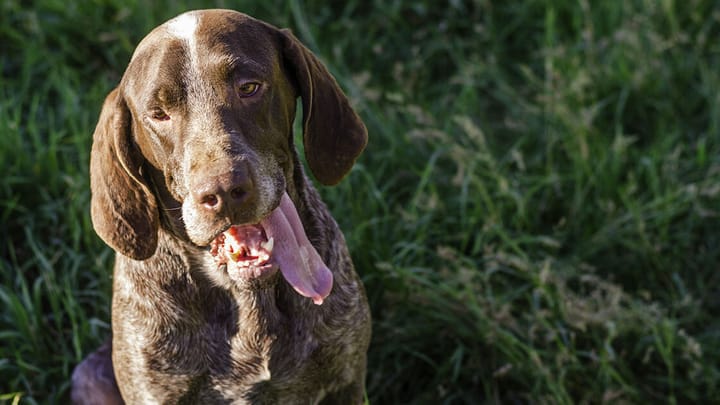Burgos Pointing Dog
Other names : Burgos Pointer, Perdiguero Burgales, Burgos Pointing Dog

The Burgos Pointer breed stems from Central Spain, dating back more than 500 years. It’s very rare to see one of these dogs outside of their native homeland, where they are used as hunting dogs for different species of game. Although bred mainly as hunting dogs, they are equally happy relaxing in a home environment.
|
Life expectancy |
The Burgos Pointing Dog has a life expectancy of between 13 and 15 years |
|
Temperament |
|
|
Size |
Large
|
|
Adult size |
Female
Between 23 and 25 in
Male
Between 24 and 26 in
|
|
Adult weight |
Female
Between 55 and 66 lb
Male
Between 55 and 66 lb
|
|
Coat colour
Liver and white, or grizzle. Some dogs have a white patch of hair on their face. Black is not acceptable for this breed standard. |
White Brown |
|
Type of coat
The smooth, short coat of the Burgos Pointer is quite thick and bushy. |
Short |
|
Eye colour
Dark hazel or brown. |
Brown
|
|
Purchase price |
The Burgos Pointing Dog costs between £500 and £700 |
If you obtain your Spanish Pointer with a view to use him for dog sports or hunting, his training needs to begin at a very young age. It is also very important to socialise him with other dogs too, to make sure that they will get along together.
More details about the Burgos Pointing Dog
Burgos Pointing Dog: Origins and history
This breed dates back to the 1500s. While there is not much documented history, the breed is from the centre of Spain, where its main ancestors were the Sabueso Espanol and the Pachon Navarro. Over time, several other pointing breeds have developed throughout Europe from the Spanish Pointer.
Physical characteristics of the Burgos Pointing Dog
One of the most notable things about this dog are his long ears that fold down, giving him the appearance of having a double chin. He is a well-built dog, very elegant with long legs. As a hunting dog, he has a muscular and athletic body with quite a large head.
FCI classification of the Burgos Pointing Dog
-
Group 7 - Pointing Dogs
-
Section 1 : Continental Pointing Dogs
Burgos Pointing Dog: Characteristics
Burgos Pointing Dog: Behaviour
Training a Burgos Pointing Dog
As a very willing and eager dog, the Spanish Pointer can be trained to hunt with very little instruction. He will also point, track, flush and retrieve any prey or game.
Burgos Pointing Dog: Lifestyle
Breed compatibility Burgos Pointing Dog
Burgos Pointing Dog: Purchase price
Your initial purchase cost will be between £500 and £700 to obtain a Spanish Pointer puppy. Monthly maintenance costs, in addition, will be around £70 -£90, taking into consideration his food, vets bills, and pet insurance.
Burgos Pointing Dog: Grooming
Surprisingly, even though he is a hunting dog, working in the fields, he remains very clean. This is probably down to his short, smooth coat that requires very little maintenance. A once-weekly brush, or rub over with a cloth will remove any excess mud or debris. Likewise, check his ears weekly to make sure they are clean.
Burgos Pointing Dog: Health
There are not many health issues documented with this breed. However, the Spanish Pointer may be prone to suffer from ear infections associated with swimming. Likewise, because he works hard in the hunting field, injuries and accidents can occur, like lacerations and cuts from the bushes he hunts in or strains and sprains to his muscles. Its average life expectancy is 13 to 15 years.
With strong physical stamina and capable of reaching high speeds when running, the Spanish Pointer is definitely an endurant canine.
This dog is used to working in all weather conditions, and he tolerates the heat quite well, especially with his short coat.
Used to hunting over all terrains and in all weathers, the Spanish Pointer certainly tolerates working in cold weather. He also loves to swim, no matter how cold the water.
If the dog is fed a healthy diet, suitable for his breed and size and providing he is exercised sufficiently, he won’t gain excess weight. However, older dogs and those that have retired from the working field, who lay around at home and are more sedentary, will easily gain excess weight.

